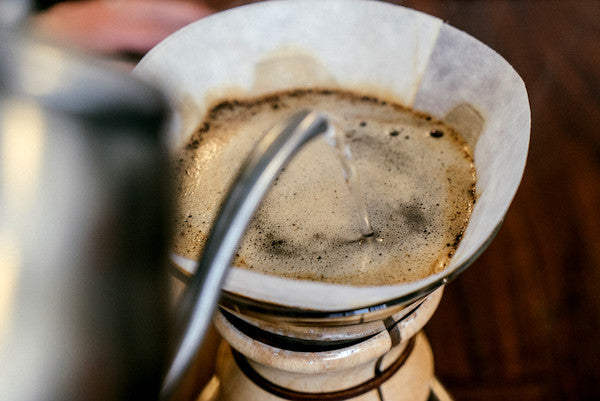
This article is the third in a series of four articles about manipulating the strength and flavor of coffee. The series covers the four major techniques for altering a coffee brew: Ratio, Grind, Time and Temperature.
It’s Time for Coffee
If “Grind” is the hardest variable to quantify, Brew Time is the hardest to execute. Brew time is different from the other “Big Four” brewing variables because the other three are decided prior to the brew and can be executed reliably: a scale weighs the coffee to achieve the chosen brew ratio, the grinder grinds to its selected setting and the kettle heats to the selected temperature. But brew time is different: the act of brewing is essentially causing water to be in contact with the coffee for a certain amount of time. For immersion brewing or autodrip, this is as easy as setting a timer or pushing a button, but for pour-over brewing, the timing and technique of pouring takes considerable skill.
How to Measure Brew Time
We mark brew time between the moment that water first touches coffee until it has fully drained from the coffee bed. Great results can be achieved in the 2-6 minute time range. The time range includes the “bloom” which is a small amount of water added to the coffee that releases carbon dioxide prior to the “main brew.” Read more about the bloom in our Brew Guide.
Using Time to Change Your Brew
The chart below shows the results of six brews I did with the Colombia Clodomiro Microlot, which is one of the coffees currently in our single origin subscription pack. Each of the brews uses a brew time between 2 min 40 sec and 4 min 20 seconds, spaced 20 seconds apart. Aside from changing time, I used the same parameters for each brew: Chemex, 1:15 Ratio, 300g water, “9” grind on the EK43 grinder, 205 F water.
The chart shows Time graphed against TDS, which is Total Dissolved Solids. TDS measures brew strength. According to the SCAA, the ideal range for TDS of brewed coffee is 1.2-1.4%. The chart also indicates how flavors changed along with the intensity of the brew.

Using the parameters in this experiment, there was a strong relationship between Brew Time and TDS. Generally speaking, for each 20 seconds of additional brew time, the TDS measurement went up by five one hundredths of a percent (1.36% TDS to 1.41% TDS.)
This Colombia Clodomiro Microlot showed some really dynamic flavors changes as well. Colombian coffee has a reputation for being generic but this coffee is a perfect counterexample. Starting in the middle, with the brew that had a time of 3 minutes 40 seconds, I tasted milk chocolate, bright cantaloupe and toasted grain notes. This was my favorite brew with a TDS of 1.41%. With the 4 min brew, the chocolate note was darker and the cantaloupe transformed into a sweeter honeydew melon. At 4 minutes 20 seconds, the flavors intensify to baker’s chocolate and fruit leather. On the shorter end, the 3 minutes 20 second coffee has milk chocolate, melon and red grape flavors. The 3 minute brew is like chocolate and sweet fruit juice. At 2 minutes and 40 seconds, this coffee is very mild but tastes like chocolate mousse and berries.
Despite having a range of 100 seconds, all of these brews were tasty. I hope these results encourage you to try a coffee you enjoy with a different brew time and that it helps you discover some new flavors. Keep an eye out for the last installment of this series--Temperature!
Leave a comment